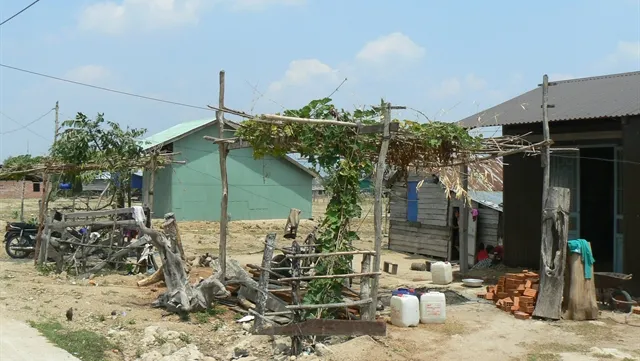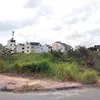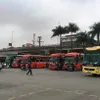Central Highlands struggles to cope with migrants
by ,http://vietnamnews.vn/society/518358/central-highlands-struggles-to-cope-with-migrants.html05 April 2019 Last updated at 21:59 PM


However, this spontaneous internal migration has threatened the region’s fragile ecology, posed risks to social order in the security-sensitive region and strained the budgets of already cash-strapped local governments who have to provide livable conditions for the migrants.
According to official statistics, in 2005-17, the Central Highlands, comprising Kon Tum, Gia Lai, Đắk Lắk, Đắk Nông and Lâm Đồng provinces, with a total area of 54,600sq.m and a sparse natural population of merely six million – received nearly 220,000 migrants.
Twenty years ago, several Mông ethnic minority people left their ancestral homes in the northern mountainous region and settled down in several sub-areas of Liêng Srônh Commune in Đam Rông District of Lâm Đồng, setting up their own village and clearing 700ha of forest to start farming.
All the Mông villages are surrounded by forestland with no asphalt roads in or out, making healthcare and education a headache for not only the villagers but also the local government.
In addition, the land they settled on is part of an area under the supervision of the Sê-rê-pôk protection forest management board, further complicating their legal status and residence.
Since 2000, Đắk Lắk has seen waves of migration from the north. Due to a lack of awareness, cultural traditions and low usage of birth control amongst the ethnic minority people, many of the migrants’ families are large, with many children.
Sính Hi Chá and Sùng Thị Cỡ in Cư Pui Commune have been married for 14 years and have seven children, but since they are all females, the couple felt they need to continue until they have a son to “carry on the family’s name.”
The high birth rate coupled with instable means of livelihoods has trapped many migrant households in a cycle of poverty and hunger, while they also lack access to basic services like education and healthcare due to their isolated status.
Lê Quang Dân, deputy head of Đắk Nông’s agriculture department, said free migrants have led to the emergence of land disputes and rampant deforestation.
“The migrants suffer many disadvantages. Since they don’t have residence status, an absolute requirement to grant healthcare and basic social protection policies, we can’t help them even if we really want to,” Lê Quang Dân said.
Cil Ha Drang, deputy chair of ethnic minority affairs of Lâm Đồng Province People’s Council, said unplanned migration, especially the large-scale movements in the Central Highlands, throws local governments’ planning into disarray.
Lê Văn Sơn, head of the Department for Economic Cooperation and Rural Development, said uncontrolled free migration has resulted in frictions with the native populace.
“There have been reports of violence and unlawful detentions and resistance against authorities, turning the region into a volatile environment in terms of social order, especially in this border region with critical defence importance.
“Criminal elements have also taken advantage of the free migration to spread anti-State propaganda and incite subversive movements, hampering the development of the Central Highlands region,” Sơn said.
Fait accompli
However, now that the Mông’s settlement has become a fait accompli, authorities have decided to best accommodate these unplanned arrivals.
In Lâm Đồng Province, for example, leaders met with residents to listen to their needs and concerns, but poverty continues to haunt them as their economy remains focused on simple agriculture.
“With bumper crops, we make do, but most villagers are still so poor and in dire need of assistance from the State,” Ma Seo Cháng, the de facto villager’s head told Công an Nhân dân (People’s Police) newspaper.
In Liêng Srônh Village, some 110 households arrived from the northern provinces of Hà Giang, Lào Cai, Điện Biên and Lai Châu in 2002-15.
Thanks to support from the district’s government and the migrants’ efforts, hunger is no longer an issue with most of the households having some land they can work on.
Lâm Đồng Province, in 2005-17, reported that free migrants to the locality reached nearly 7,200, mostly from the northern region and taking roots in geographically isolated forest areas inside Di Linh, Đam Rông and Bảo Lâm districts.
But thanks to its soil and climate conditions, Đắk Nông Province has proved the most favourable destination in Central Highlands. The spontaneous migrants living scattered across the upland locality number 174,000, nearly a third of its total current population 646,000 by the end of 2017, according to Lê Quang Dân, deputy head of the provincial agriculture department.
Lê Văn Sơn, head of the Department for Economic Cooperation and Rural Development, said the trend of migration to the Central Highlands region seems to have wound down a bit in recent years but remains a complex issue.
“The migration takes place throughout the year, but most frequently during the time before and after the Lunar New Year celebration,” Sơn said.
“Migrants usually come in small groups, at first just to visit or live for a short time with their relatives who have relocated there previously and then eventually moved there along with their family,” he said, adding that they usually form groups of the same tribe or family.
Giàng A Chu, deputy chair of National Assembly’s Ethnic Minority Council, said the five provinces have approved 42 settlement programmes for more than 16,000 households. So far, the provinces have reserved some 17,000ha of land for production purposes for migrant families from its land fund, which have been expanded with the return of State-owned land from State farming and forest enterprises.
Chu said proposals have been made so that the Ministry of Finance and the Ministry of Planning and Investment would continue to afford flexible budget allocation to the Central Highlands provinces so their settlement programmes could work as intended.
He also urged the Ministry of Home Affairs and Ministry of Justice to fast-track identity verification of free migrants in the Central Highlands and quickly issue ID numbers, temporary or permanent residence statuses and recognise the long-standing spontaneous migrants’ settlement areas as residential areas, which would make them eligible for social protection benefits. — VNS





